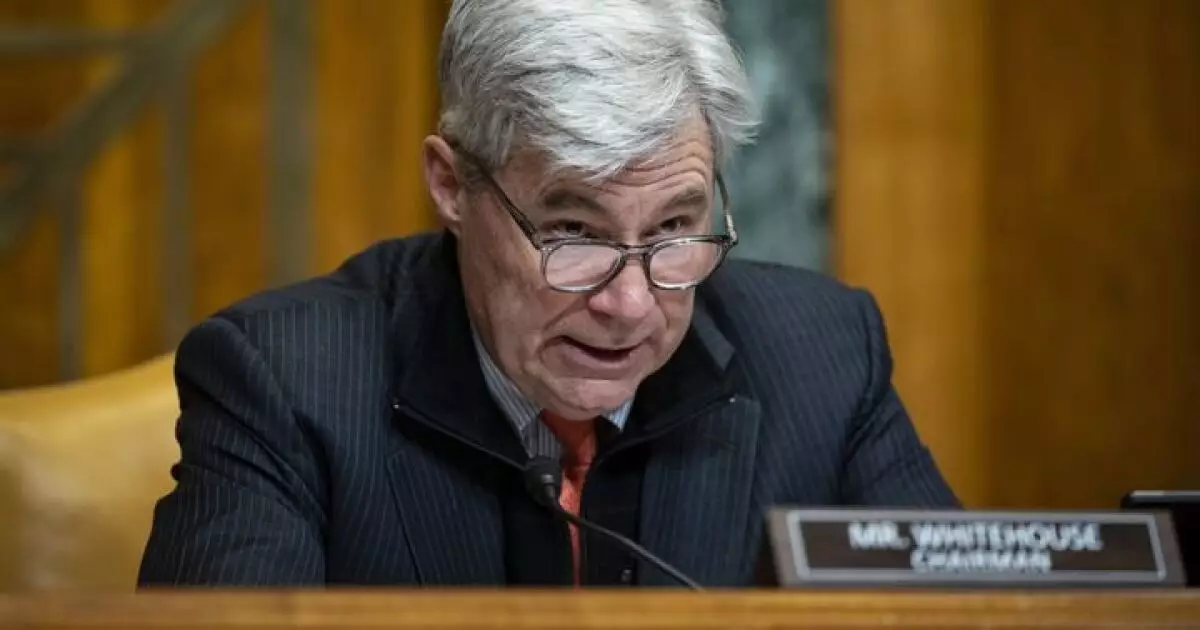The landscape of American transportation infrastructure is experiencing tumultuous changes due to federal funding uncertainties that have sparked significant confusion among lawmakers and transportation officials. The initial freeze on funds—a temporary measure enacted by the White House—coupled with its subsequent rescindment has thrown ongoing infrastructure projects into jeopardy. This situation has prompted bipartisan concerns about the integrity of the federal funding process, which is critical for infrastructure development, particularly projects approved by Congress.
Senator Sheldon Whitehouse, the Democratic ranking member of the Environment and Public Works Committee, expressed a grave concern regarding this disarray. He articulated a fundamental principle: “we simply cannot have a situation in which Congress comes together in bipartisan fashion, agrees on a measure, and a president… picks and chooses among them.” This sentiment underscores a deep-rooted expectation that those sworn into office uphold the laws crafted by Congress, highlighting a potential constitutional crisis when such laws are disregarded or selectively enforced.
During an American Association of State Highway and Transportation Officials (AASHTO) conference, the implications of the halted funds were felt particularly in Rhode Island, where the situation remains unresolved despite the White House’s reversal. The freeze not only raised questions about the government’s reliability but also set off a lawsuit involving 22 states, further complicating an already fraught process. Such legal challenges reflect broader frustrations among state transportation departments, which depend heavily on federal support to execute essential infrastructure projects.
As state Departments of Transportation grapple with the aftershocks of the funding freeze, they face additional long-term challenges, particularly with the Bipartisan Infrastructure Law’s funding set to expire in September 2026. Lawmakers are now confronted with the urgent task of reauthorizing a comprehensive infrastructure bill. The debate is polarizing: should the focus be on inclusive, expansive projects that integrate airports and broadband, or stick to a more traditional framework centered on surface transportation?
Joung Lee, the director of policy and government relations at AASHTO, made it clear that surface transportation must remain at the forefront of any future legislation. “Whatever the bill ultimately looks like,” he remarked, “surface transportation has to be the foundation in the next bill.” This insistence on prioritizing highways, transit, and rail reflects a collective understanding that America’s transport system hinges on well-maintained, accessible road networks.
Moreover, stakeholders at both the state and local levels advocate for a more streamlined approach to securing federal funding—specifically, they favor enhancing formula funding over discretionary grants. Garrett Eucalitto, the AASHTO president, highlighted the inefficiencies tied to individual grant agreements, which often demand extensive time, effort, and financial resources to set up. Such wasted time could otherwise be spent on directly advancing infrastructure projects that communities desperately need.
Interestingly, this call for practical reforms finds common ground even among some Republican lawmakers. Senator Shelley Moore Capito, Chair of the Environment and Public Works Committee, voiced a similar sentiment, advocating for the elimination of ineffective funding avenues: “Let’s get rid of the ones that don’t work. Put the discretionary dollars back into the formula programs.” This bipartisan support suggests a compelling desire for innovation in funding structures that empower state governors and legislators to make decisions tailored to their specific contexts.
However, the overarching challenge remains the sustainability of the Highway Trust Fund, which faces insolvency by 2027 without significant Congressional intervention. The surge in electric vehicles (EVs) poses a unique dilemma, as these vehicles, while contributing to a greener environment, do not contribute to the traditional gas tax revenue that supports the Highway Trust Fund. The ramifications of this decline in revenue are severe, further complicating the financial landscape for transportation initiatives.
The newly appointed Department of Transportation Secretary, Sean Duffey, has initiated significant policy shifts, including a memorandum that relaxes stringent Corporate Average Fuel Economy standards. Duffey’s stance outlines a conflicted approach to transportation funding and environmental sustainability. There appears to be an upcoming policy re-evaluation concerning EV mandates, with Capito predicting major changes: “I think you can expect the EV mandate to fall.”
States are not sitting idly by as they contend with shortcomings in the funding structure related to EVs. As many states grapple with compensating for the lack of revenue from these vehicles, they have begun to implement a patchwork of user fees and registration upcharges to fill budgetary gaps. Russell McMurry, AASHTO’s Vice President and Treasurer, noted that most states have some form of state-level EV fee, but a cohesive national framework remains elusive.
The intricacies of federal funding for transportation infrastructure are generating critical challenges that extend far beyond simple budgetary concerns. Lawmakers and state officials are caught in a web of political tension, evolving legislation, and significant financial pressures as they aim to secure a future where America’s infrastructure can thrive. The pathway forward is fraught with debate over prioritization, funding models, and the need to adapt to emerging transportation paradigms, particularly in the face of a rapidly changing automotive landscape.

